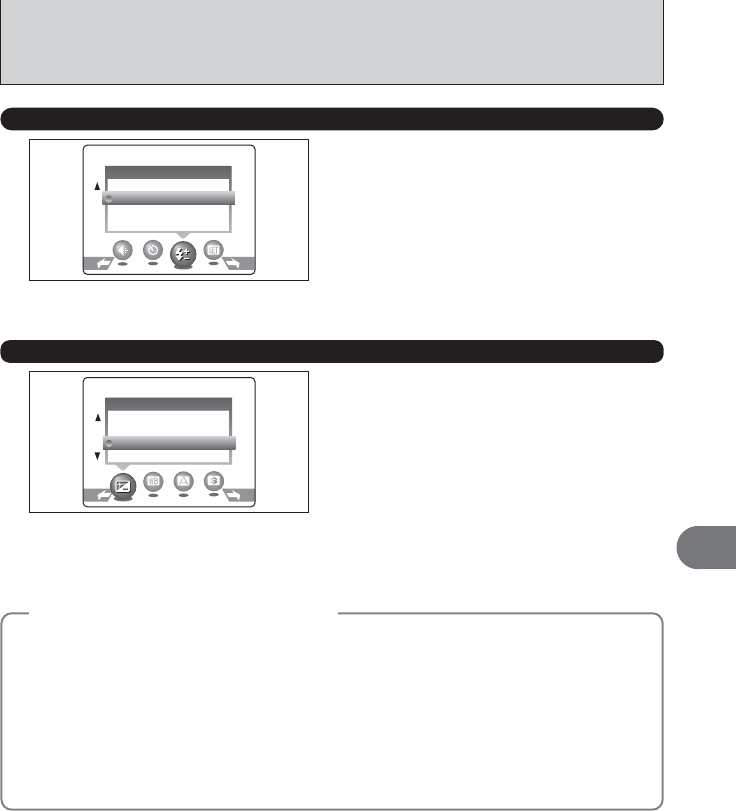
41
Advanced Features
3
D
EV
(
EXPOSURE COMPENSATION
)
Select EV in the “s” Photography mode.
Use this function for shots to get the correct
brightness (exposure), such as shots with
extremely high contrast between the subject and
the background.
h Compensation range
–2.1 EV to +1.5 EV (13 steps in 0.3 EV increments)
See P.95 for more information on EV.
●
!
Exposure compensation is disabled in the following
situations:
i When the flash is used in Auto or Red-eye reduction mode
i When dark scenes are shot in Forced flash mode
Select Flash brightness in the “s” Photography
mode. Use this setting to change the amount of
light emitted by the flash to suit the photography
conditions or to achieve a desired effect.
h Compensation range: ±2 leveles
–0.6 EV to +0.6 EV in approx. 0.3 EV increments
(total: 5 levels selectable)
See P.95 for information on EV.
●
!
Depending on the type of subject and the shooting distance,
brightness adjustment may have no effect.
z
FLASH BRIGHTNESS ADJUSTMENT
◆
To obtain the optimum brightness
◆
Adjust the exposure compensation according to the level of brightness or darkness in the image.
■ Guide to compensation
i Backlit portraits: +0.6 EV to +1.5 EV
i Very bright scenes (such as snowfields) and highly reflective subjects: +0.9 EV
i Shots made up predominantly of sky: +0.9 EV
i Spotlit subjects, particularly against dark backgrounds: –0.6 EV
i Scenes with low reflectivity, such as shots of pine trees or dark foliage: –0.6 EV
hWhen the subject appears too bright,
try a negative (–) compensation setting.
This will make the overall image darker.
hWhen the subject appears too dark,
try a positive (+) compensation setting.
This will make the overall image brighter.


















